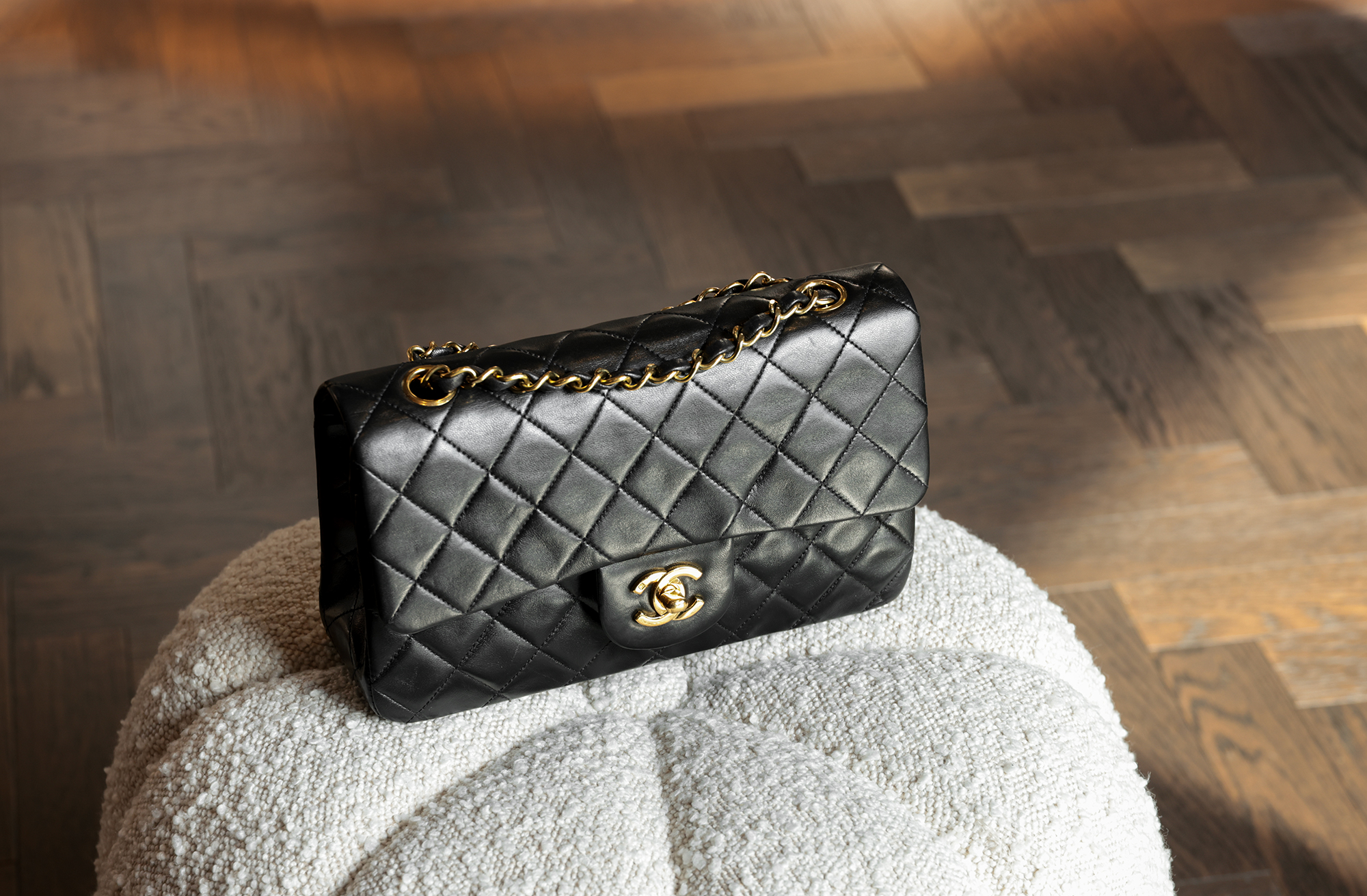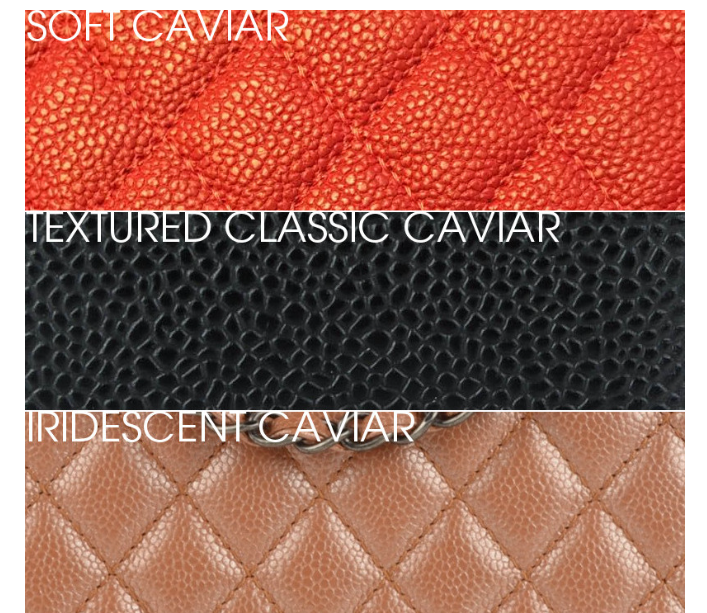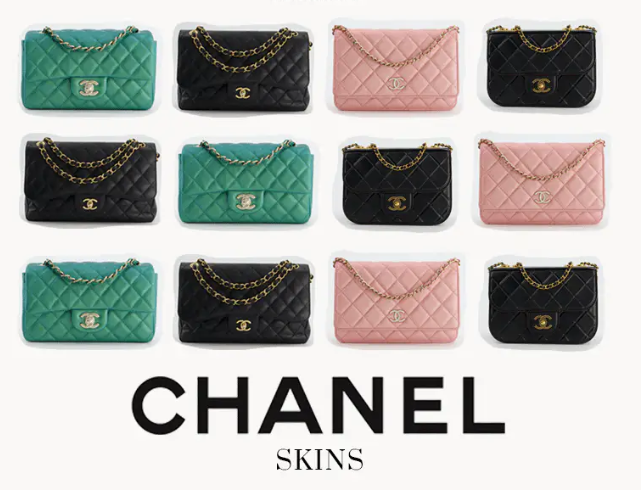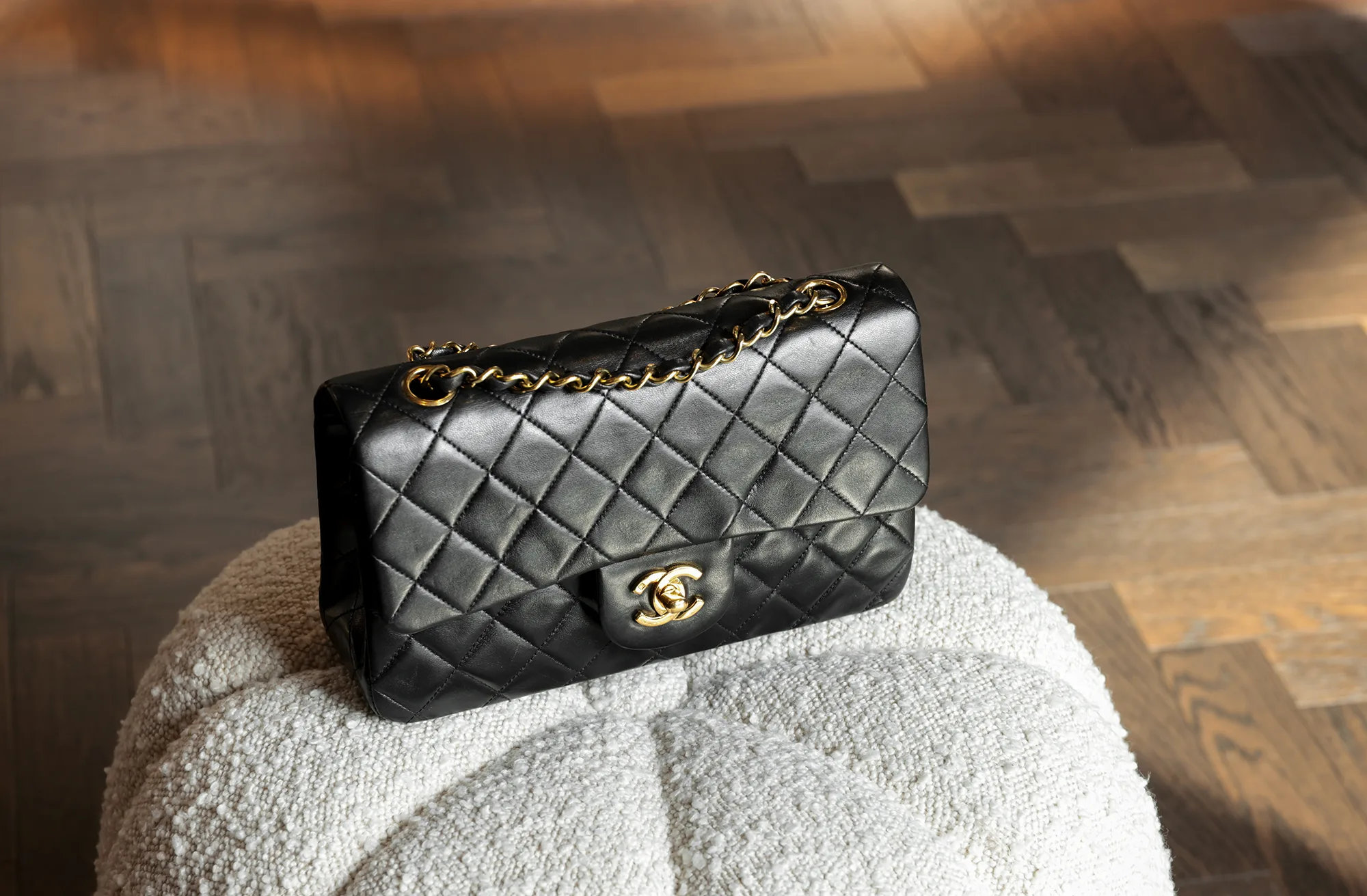Chanel bags are iconic products in the global luxury market, renowned for their timeless designs and exceptional craftsmanship. From the classic flap bag to chain bags, each Chanel bag is not only a fashion statement but also a showcase of meticulous manufacturing and attention to detail. In the production of Chanel leather bags, the choice of leather is critical—it affects not only the appearance and feel of the bag but also its durability and longevity. For brand clients and professional manufacturers, understanding the main types of leather used by Chanel can help make more informed decisions in design, customization, and leather bag production. This article will explore the key leather materials used in Chanel bag production, revealing the craftsmanship considerations and practical value behind their leather bag selection.
What Is a Chanel Leather Bag?

A Chanel leather bag is a symbol of timeless luxury and exceptional craftsmanship. Known for its iconic designs, from the classic quilted flap to chain bags, Chanel leather bags are sought after by fashion enthusiasts and brand clients worldwide. Understanding the leather sourcing, production channels, and historical evolution behind these bags provides valuable insights for leather bag manufacturers and customization.
Chanel Leather Sourcing and Production Channels
Chanel sources its leather from top-quality tanneries, primarily in Italy and France, renowned for producing premium calfskin, lambskin, and caviar leather. Some leathers are imported directly from specialized suppliers to guarantee uniform texture, color, and durability, while others are processed in-house with strict quality control. This meticulous selection and production ensure that every Chanel leather bag meets the brand’s high standards for both aesthetic appeal and longevity.
History of Chanel Leather Bags
The first Chanel quilted flap bag was introduced in 1955, and since then, Chanel has produced over 10 million leather bags worldwide. Over decades, the brand has continually refined its designs and materials, blending tradition with innovation. For example, the caviar leather line was developed to offer a more durable alternative to lambskin, responding to the needs of modern users while maintaining the signature Chanel elegance. This historical data highlights not only the brand’s legacy but also the evolution of leather craftsmanship in high-end leather bag production.
In summary, the combination of premium leather sourcing, precise production channels, and a rich historical legacy makes Chanel leather bags a benchmark for quality, style, and durability in the luxury leather bag industry.
Overview of Chanel Bag Leather Types

Chanel leather bags utilize a range of high-quality leathers, each chosen for its unique properties and suitability for different bag designs. Understanding these materials is essential for leather bag production and customization.
1. Lambskin (Sheepskin)
-
Characteristics: Lambskin is exceptionally soft and smooth, providing a luxurious hand feel. It has a natural sheen that enhances the elegance of classic designs.
-
Usage: Often used in Chanel’s iconic flap bags and chain bags, where softness and refined appearance are prioritized.
-
Industrial Details: Lambskin is typically vegetable-tanned and aniline-dyed to preserve its natural texture. Thickness ranges from 0.6–0.8 mm, allowing flexibility for quilting without cracking.
-
Considerations: Lambskin is prone to scratches and stains, requiring careful handling and protective coatings to maintain its pristine look.
2. Caviar Leather (Textured Calfskin)
-
Characteristics: Caviar leather has a pebbled texture, offering superior scratch resistance and durability compared to lambskin. Its grain pattern adds a subtle visual depth.
-
Usage: Suitable for everyday-use bags and handbags that require higher resilience.
-
Industrial Details: Caviar leather undergoes mechanical embossing to create uniform pebbled grains, followed by semi-aniline finishing to balance softness and toughness. Thickness typically ranges 0.8–1.0 mm, providing structural support for larger bags.
3. Other Materials
-
Calfskin: Smooth and firm, often used in medium to large handbags; can be embossed or coated for added durability.
-
Suede: Offers a matte, velvety texture; used for seasonal designs or limited editions. Requires protective sprays for moisture resistance.
-
Patent Leather: Coated with a glossy finish for visual impact; used sparingly in accent pieces or evening bags.
-
Industrial Notes: Most of these leathers are conditioned with oil and wax treatments to enhance suppleness, prevent cracking, and maintain consistent color during cutting and stitching processes.
Each leather type in Chanel bags is selected not only for aesthetic appeal but also for its physical properties, processing compatibility, and durability. Understanding these details is crucial for brands and manufacturers involved in leather bag production or high-end customization.
4. Comparison: Lambskin vs Caviar Leather

Chanel’s two most popular leather types, lambskin and caviar leather, offer distinct advantages and challenges. Understanding their differences is essential for brands, manufacturers, and designers when making decisions about leather bag production.
Appearance
-
Lambskin: Smooth, glossy, and elegant, lambskin provides a classic, refined look. Its natural sheen enhances the quilted patterns, making it ideal for high-end, statement pieces. For example, the classic Chanel 2.55 flap bag in lambskin is often showcased in runway shows due to its luxurious appearance.
-
Caviar Leather: Textured with a pebbled surface, caviar leather has a slightly matte finish that hides scratches and scuffs effectively. Its grain pattern gives a structured and robust visual impression, often used in everyday-use Chanel bags.
Touch & Feel
-
Lambskin: Extremely soft and supple, offering a plush hand feel. It feels more luxurious but also delicate.
-
Caviar Leather: Firmer and more resilient, with a slightly grainy texture. It provides a sense of durability without compromising comfort.
Durability
-
Lambskin: More prone to scratches, dents, and water spots. Suitable for users who handle bags with care.
-
Caviar Leather: Highly resistant to scratches and abrasions, making it ideal for frequent use and travel. Brands often recommend caviar leather for customers who prefer low-maintenance luxury.
Maintenance Difficulty
-
Lambskin: Requires regular cleaning, conditioning, and careful storage. Protective sprays are recommended to prevent staining.
-
Caviar Leather: Easier to maintain due to its textured surface. Light cleaning is usually sufficient, making it a practical choice for long-term use.
Caviar Leather: Easier to maintain due to its textured surface. Light cleaning is usually sufficient, making it a practical choice for long-term use.
Usage Suggestions
-
Lambskin: Perfect for special occasions, formal events, or limited edition collections where appearance is prioritized over durability.
-
Caviar Leather: Ideal for daily-use handbags, professional settings, and for customers seeking a balance between luxury and practicality.
Quick Comparison Table
|
Feature |
Lambskin (Sheepskin) |
Caviar Leather (Textured Calfskin) |
|---|---|---|
|
Appearance |
Smooth, glossy, luxurious |
Pebbled, structured, matte |
|
Touch & Feel |
Soft, plush |
Firm, slightly grainy |
|
Durability |
Prone to scratches & dents |
Highly scratch-resistant |
|
Maintenance |
High, requires careful care |
Low, easy to clean |
|
Usage Suggestion |
Special occasions, luxury items |
Daily use, professional & practical |
How Chanel Selects Leather for Production

For brands, manufacturers, and designers involved in leather bag production, understanding Chanel’s leather selection process is essential for replicating high-end quality standards. In the following sections, we will explore the full production workflow, including raw material procurement standards, collaboration with premium tanneries, advanced leather coloring and finishing techniques, as well as rigorous quality control and feel testing. These insights are valuable for B2B clients and manufacturers aiming to achieve consistency, durability, and luxury aesthetics in leather bag production.
Raw Material Procurement Standards
Chanel applies strict criteria when sourcing hides, ensuring only the highest-quality leather enters production. Key standards include:
-
Thickness Consistency: Hides are measured with precision calipers to ensure a uniform thickness between 0.6–1.0 mm, depending on the leather type.
-
Grain Quality: Each hide is inspected for natural imperfections, scars, and texture uniformity; only hides with minimal blemishes are accepted.
-
Moisture Content: Leather must maintain an optimal moisture level of 40–50% after conditioning to prevent cracking during cutting and stitching.
-
Chemical Residue Limits: Tanned leather is tested to ensure safe levels of chromium, formaldehyde, and dyes according to ISO and REACH standards.
These standards ensure that the leather is not only aesthetically pleasing but also suitable for high-end, durable Chanel leather bags.
Collaboration with Premium Tanneries
Chanel partners with top-tier tanneries in Italy and France, leveraging their expertise in tanning, dyeing, and finishing. Collaborating with premium leather suppliers ensures:
-
Consistent color and texture across large production runs
-
Access to specialized tanning methods, such as vegetable tanning for lambskin and semi-aniline finishing for caviar leather
-
Advanced treatments to enhance scratch resistance, suppleness, and durability
By working closely with expert tanneries, Chanel maintains the high standards required for leather bag production and reduces risks of material inconsistency.
Leather Coloring and Finishing Techniques
Chanel leather undergoes complex finishing processes:
-
Aniline Dyeing: Preserves the natural grain and softness of lambskin while achieving uniform color penetration.
-
Mechanical Embossing: Creates the signature pebble texture of caviar leather for durability and scratch resistance.
-
Semi-Aniline Finishing: Adds a thin protective layer without compromising flexibility.
-
Oil and Wax Conditioning: Leather is treated with natural oils, waxes, and eco-friendly plasticizers to enhance elasticity, water resistance, and longevity.
-
UV Protection Coating: Applied to certain batches to reduce fading and maintain consistent color in different lighting conditions.
Quality Control and Feel Testing
Each hide is rigorously tested before entering production:
-
Tactile Inspection: Skilled technicians check suppleness, elasticity, and grain uniformity.
-
Color Fastness Test: Leather samples are exposed to light, water, and abrasion to ensure color stability.
-
Mechanical Strength Tests: Tensile strength and tear resistance are measured to guarantee durability in stitching and bag construction.
-
Defect Detection: Laser scanning and visual inspections identify micro-scratches, scars, or inconsistencies.
This thorough process ensures that every Chanel leather bag meets the brand’s high expectations for luxury, durability, and tactile quality.
How to Identify Different Leather Types

In high-end handbag manufacturing, identifying the correct leather type is crucial for maintaining quality and consistency. Lambskin is smooth, glossy, and exceptionally soft, offering a luxurious hand feel, while caviar leather is firmer with a pebbled texture that provides durability and scratch resistance. Recognizing these differences ensures the material aligns with the intended design and functional requirements.
Professionals often inspect the leather’s edges and backside to evaluate fiber density and tanning quality. They also examine color uniformity, grain pattern, and elasticity, which helps determine the leather’s suitability for premium handbags and its performance over time.
For more precise verification, industrial tools like calipers or magnification devices can measure thickness and embossing precision. Mastering these methods allows manufacturers and brand clients to confidently select the right material for designer handbags and other high-end leather goods production, ensuring durability, appearance, and consistency. If you are unsure about selecting the right leather or need professional guidance, Sunteam can provide expert support and customized solutions for your handbag projects.
Conclusion
Chanel bags exemplify how careful leather selection defines luxury, durability, and timeless style. From the soft elegance of lambskin to the resilient texture of caviar leather, each material contributes to the bag’s aesthetic appeal and long-term performance. For brands and manufacturers involved in luxury bag manufacturing, understanding these leather types and their processing requirements is essential for delivering consistent, high-quality products. Partnering with experienced manufacturers ensures access to expert guidance, precise material selection, and advanced production techniques, allowing clients to create premium leather handbags or other high-end leather products that meet the highest standards of craftsmanship and sophistication.

